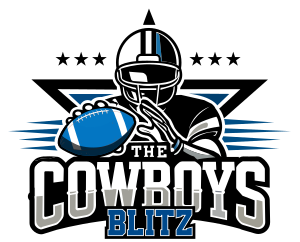"Setting a goal is not the main thing. It is deciding how you will go about achieving it and staying with that plan." - Tom Landry
Tom Landry designed his 4-3 "Flex" defense so that he didn't necessarily need superior players at every position, just capable smart defenders that could read a key and react appropriately. He was intelligent enough to realize that the reality of winning meant the team drafted in the lower quarter every season, save for some draft choices they picked up via trades.
The Cowboys were rarely given the opportunity to add "blue chip" players in the top of the first round, or any round for that matter.
Each position required specific attributes that were not always related to athletic ability. I would say his #1 requirement from all defenders would be discipline. That is, the discipline to do other than what a player would instinctively do in a particular situation. He knew that it was the goal of every opponent offense to deceive defenses and take advantage of their errors. So long as players followed their keys, they could not be fooled.
Landry did not believe in building around specific players on defense because he knew that NFL careers were fleeting. What do you do after that player leaves the game? You may not have a high draft pick to throw in there for some time.
Landry and Schram were on the same page and would normally draft players to fit that defensive scheme. It was the reason there were so many Cowboys defenders that were either drafted in much lower rounds or not drafted at all.
Longtime Cowboys starters and eventual SB participants included D.D. Lewis, George Andrie and Pat Toomay, all 6th round picks. They also included Jethro Pugh (11th round), Mark Washington (13th round) and Larry Cole (16th round). Starting OLB Dave Edwards was drafted in the 25th round of the AFL draft by the Broncos.
Undrafted free agent rookies included perennial Pro Bowlers Cliff Harris and Cornell Green.
Landry's system was so successful he started two undrafted rookies (Everson Walls and Michael Downs) and a former11th round pick (Dennis Thurman) in his starting defensive backfield in 1981 and they set a team record for INT's in a season, still ranked 3rd in NFL history.
There were high draft picks in some area to be sure. The flex defense needed physically talented guys in the middle of front seven , particularly at DT and MLB. Those included high draft picks like Bob Lilly, Randy White, John Dutton, Lee Roy Jordan and Ken Norton Jr. However, the majority of the defense was plug and play so long as the player was disciplined enough to do what Landry required of them.
Although there were some high picks that couldn't do things the Landry way, the majority of the players recognized that it was difficult to criticize Landry's defense based on it's success. When the Cowboys whiffed on a draft pick, it wasn't because they misevaluated their level of talent, it was because that players lacked the will to adjust to Landry's system. However, for every top pick that didn't make it, there was a group of lower picks or UDFA's that were happy to comply.
From 1964 to 1978, 15 consecutive seasons, the Cowboys defense was ranked top ten every season in both yards and preventing points. In fact, they were never ranked lower than 7th in yardage out of 26 to 28 teams in the league.
Dan Quinn understands the benefits of acquiring players to fit his specific scheme rather than constantly redesigning his defense to fit the skills of those presently on his defense. He realizes that one of the most underestimated positions requiring physical talent is DT.
Guys like Mazi Smith will rarely make the highlight reels. However, when you watch the players that do, you might notice Mazi paving the way.
Kellen Moore was busy trying to fit square pegs into round holes.




